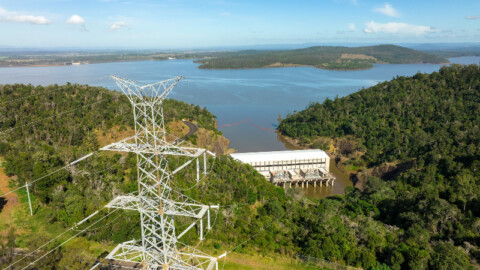The new North Esk Irrigation Scheme in Tasmania has officially opened and is providing farmers in the White Hills region unprecedented access to water via the 5200ML Rocklands Dam, two pump stations and 57km of distribution pipeline.
This marks the completion of the four sustainable irrigation schemes of the Project Agreement for Tasmania Tranche II, delivering irrigation to areas around White Hills, Smithton, Bothwell and Swansea, with 21.8GL in water storage, coverage of 52,000 hectares of irrigable land and the creation of 179 ongoing jobs.
The scheme was launched in late March 2019 by Minister for Agriculture and Water Resources, David Littleproud; Senator for Tasmania, Steve Martin; Assistant Minister for Agriculture and Water Resources, Richard Colbeck; Tasmanian Minister for Primary Industries and Water, Guy Barnett; and Chair of Tasmanian Irrigation, Samantha Hogg.
“The Coalition Government is building the water security infrastructure of the 21st century,” Mr Littleproud said.
“The North Esk Irrigation Scheme delivers a new dam, pump stations and water distribution pipelines.
“Already, Tasmanian farmers have grown crops using water pumped from the North Esk River to the 5200-ML Rocklands Dam for release during summer.
“The Scheme will boost the region’s irrigable area to more than 16,500 hectares and add 50 ongoing jobs to local communities.”
Mr Martin said the infrastructure improvements would help farmers adapt to future conditions with greater certainty about water supplies.
“More reliability in irrigation not only improves current farming prospects, but it gives farmers greater confidence in decision-making,” Mr Martin said.
“With better water security, there are more opportunities to consider things like crop diversification or new investments, which we need for our regional communities to thrive.”
The Australian Government has provided $18.92 million to the project in a public-private partnership with the Tasmanian Government and irrigation companies. The Coalition Government provided $60 million, the Tasmanian Government $30 million, and the remainder of the construction budget met by private investment.


















